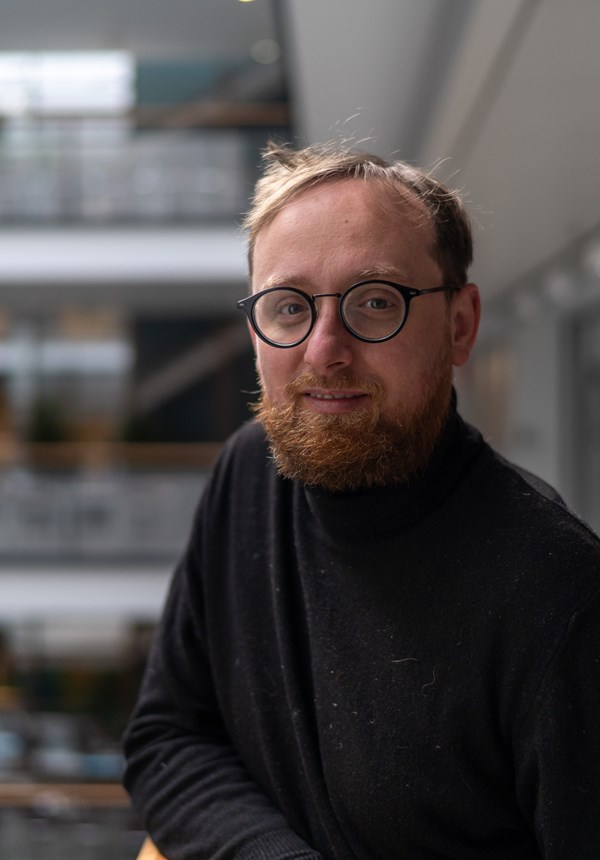Genotype-Phenotype correlations in Neuromuscular Disorders
The most recent scientific advancements have been able to provide a conclusive genetic diagnosis to an increasing number of patients. However, the observed clinical picture often diverges from the expected one and the disease course is to some extent difficult to predict. This group aims to identify those underlying mechanisms explaining the divergences often observed in neuromuscular diseases, a class of diseases affecting muscular function. The work will directly benefit patients, facilitating a proper diagnosis and prognosis and paving the way to possible therapies.

The rapid technological progress in genomics has reshaped the field of medical genetics, increasing the diagnostic rate and enabling the identification of a large number of novel disease genes responsible for Mendelian diseases. The classic paradigm ´one gene-one disease' has been definitively overcome. Causative variants in the same gene often result in a wide spectrum of phenotypes and a specific clinical phenotype can be caused by variants in several genes. The complex genetic architecture underlying human diseases has not been fully clarified and we still lack a clear-cut genotype–phenotype correlation for most genetic disorders.
Neuromuscular diseases are a useful study model to identify the molecular mechanisms underlying the often-observed discordance between the identified genotype and the expected phenotype.
This group have contributed to better characterize several genetic skeletal diseases, including titin-related myopathies, actininopathies and anoctaminopathies. Through a combination of state-of-art methods and a large network of international collaborators, the aim is to dissect the molecular mechanisms underlying the heterogenous phenotypes we observe in patients with neuromuscular diseases, facilitating the diagnostic and prognostic process and, thereby, the development of disease therapies.
Read More
Marco Savarese, Docent, Junior Group Leader
Ali Oghabian, PhD
Veronica Sian, PhD
Johanna Ranta-aho, PhD Researcher
Rafaela Owusu, Research Assistant
Victoria Lillback, MSc student
Ella Nippala, MSc student
Swethaa Natraj Gayathri, MSc student
Maria Francesca Di Feo, MD, visiting student
Rare ACTN2 Frameshift Variants Resulting in Protein Extension Cause Distal Myopathy and Hypertrophic Cardiomyopathy through Protein Aggregation.
Ranta-Aho J, Felice KJ, Jonson PH, Sarparanta J, Palmio J, Tasca G, Sabatelli M, Yvorel C, Harzallah I, Touraine R, Pais L, Austin-Tse CA, Ganesh V, O'Leary MC, Rehm HL, Hehir MK, Subramony S, Wu Q, Udd B, Savarese M. medRxiv [Preprint]. 2024.
The crucial role of titin in fetal development: recurrent miscarriages and bone, heart and muscle anomalies characterise the severe end of titinopathies spectrum.
Di Feo MF, Lillback V, Jokela M, McEntagart M, Homfray T, Giorgio E, Casalis Cavalchini GC, Brusco A, Iascone M, Spaccini L, D'Oria P, Savarese M, Udd B. Journal of Medical Genetics. 2023.
Mutation update for the ACTN2 gene.
Ranta-Aho J, Olive M, Vandroux M, Roticiani G, Dominguez C, Johari M, Torella A, Böhm J, Turon J, Nigro V, Hackman P, Laporte J, Udd B, Savarese M.
Human Mutation. 2022.
Out-of-Frame Mutations in ACTN2 Last Exon Cause a Dominant Distal Myopathy With Facial Weakness.
Savarese M, Vihola A, Jokela ME, Huovinen SP, Gerevini S, Torella A, Johari M, Scarlato M, Jonson PH, Onore ME, Hackman P, Gautel M, Nigro V, Previtali SC, Udd B. Neurology Genetics. 2021.
Genotype-phenotype correlations in recessive titinopathies.
Savarese M, Vihola A, Oates EC, Barresi R, Fiorillo C, Tasca G, Jokela M, Sarkozy A, Luo S, Díaz-Manera J, Ehrstedt C, Rojas-García R, Sáenz A, Muelas N, Lonardo F, Fodstad H, Qureshi T, Johari M, Välipakka S, Luque H, Petiot P, de Munain AL, Pane M, Mercuri E, Torella A, Nigro V, Astrea G, Santorelli FM, Bruno C, Kuntzer T, Illa I, Vílchez JJ, Julien C, Ferreiro A, Malandrini A, Zhao CB, Casar-Borota O, Davis M, Muntoni F, Hackman P, Udd B. Genetics in Medicine. 2020.
Vincenzo Nigro, Telethon Institute of Genetics and Medicine, Pozzuoli (NA), Italy
Jocelyn Laporte, Dpt of Translational Medicine and Neurogenetics, I.G.B.M.C., Strasbourg, France
Academy of Finland
CoMPaSS-NMD, HORIZON-HLTH-2022-TOOL-12-01

